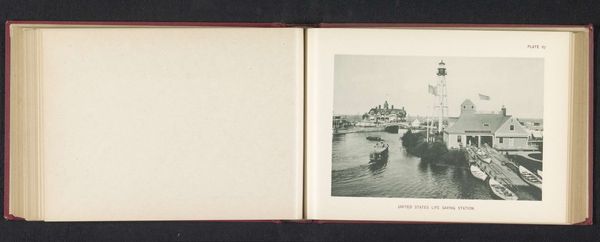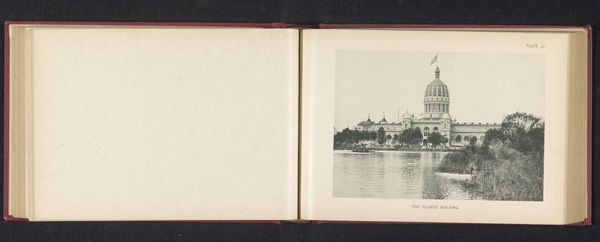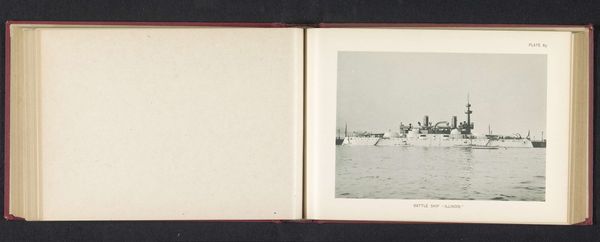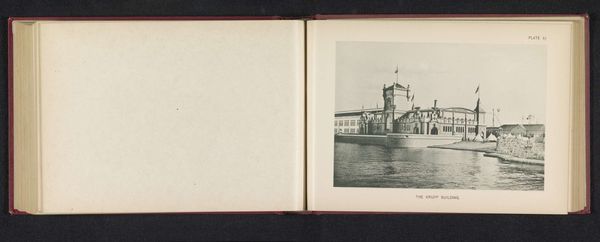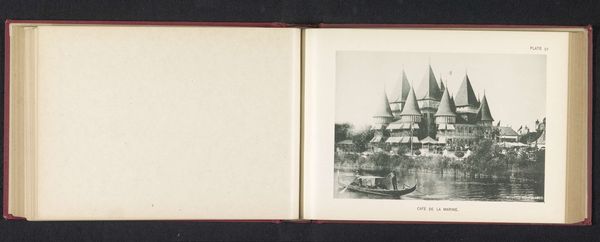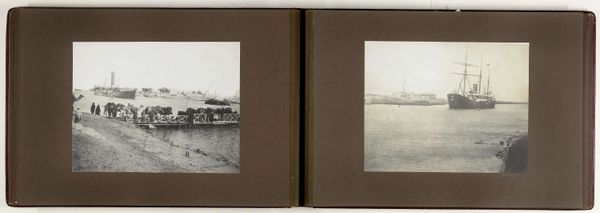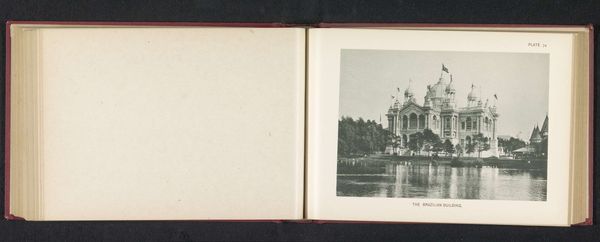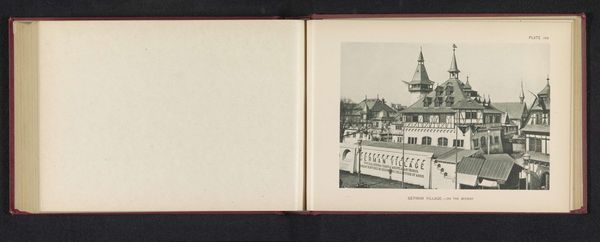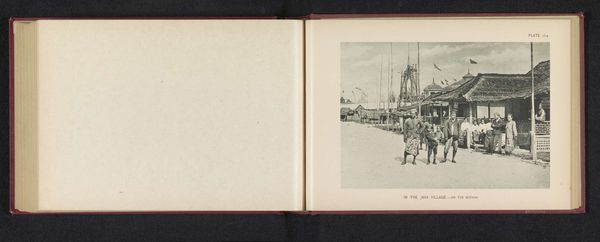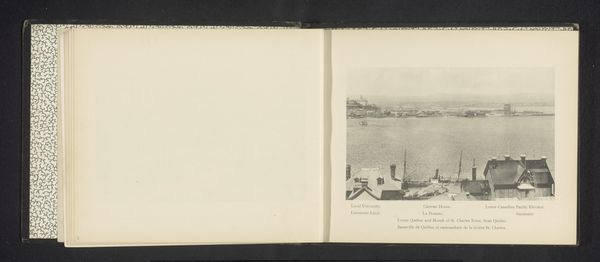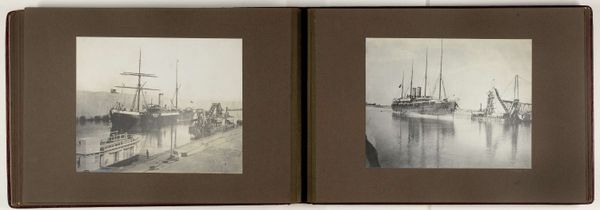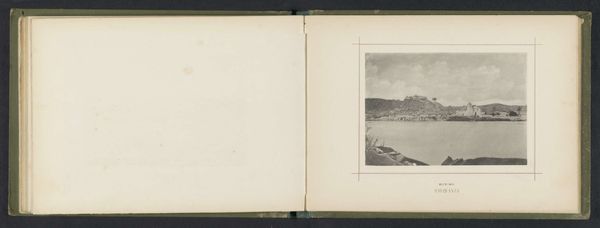
Paviljoen van Spanje op de World's Columbian Exposition in Chicago in 1893 1893
0:00
0:00
print, photography, albumen-print, architecture
# print
#
photography
#
coloured pencil
#
cityscape
#
albumen-print
#
architecture
Dimensions: height 133 mm, width 191 mm
Copyright: Rijks Museum: Open Domain
Editor: Here we have a photographic print, "Paviljoen van Spanje op de World's Columbian Exposition in Chicago in 1893," taken in 1893 by Charles Dudley Arnold. It feels like a document of a specific time, and also somewhat sterile. How do you interpret this work in the context of the World's Columbian Exposition? Curator: The image is fascinating. It isn't just about Spanish architecture; it's a potent symbol of colonial power projected onto the world stage. Consider the political landscape of 1893: the echoes of Spanish colonialism, the United States expanding its own influence. How does this image reinforce or challenge the narratives around those power dynamics? Editor: So, the pavilion isn’t simply representing Spain, but Spain’s reach? I hadn't thought of it that way. Curator: Precisely. The architecture is a deliberate projection of Spanish identity, but the fair itself was a carefully orchestrated display of global power. Who was invited to participate? What narratives were being promoted? Think about what perspectives were being actively silenced or omitted within the “official” record, and who had access to creating images like this one. Editor: I see what you mean. It’s about what the image includes, but also what it leaves out, and who it's for. How much control did Spain have over how they were being represented in Chicago? Curator: A critical question! To what extent were these representations acts of self-definition versus being defined by the gaze of others? By displaying its architectural heritage within the American context of the World's Fair, Spain was necessarily engaging with the narrative being built by the United States. Editor: It's almost like a conversation between empires being captured here, frozen in time. Thanks! I’ll definitely be looking at these kinds of images differently from now on. Curator: Absolutely! Art – even architectural photography – isn’t a neutral reflection; it's actively participating in the dialogues of its time.
Comments
No comments
Be the first to comment and join the conversation on the ultimate creative platform.
